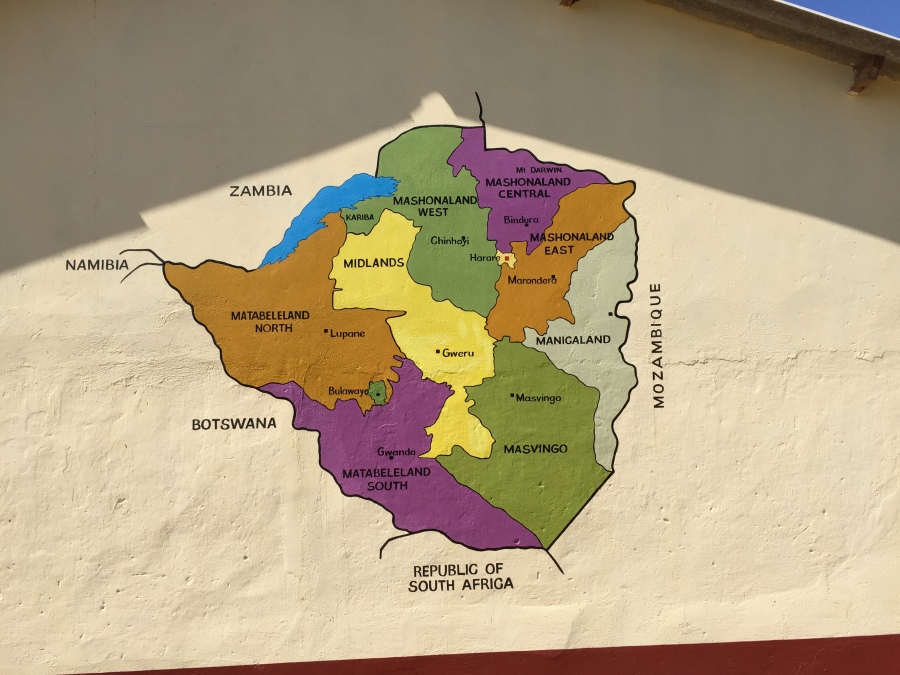And so, my three months with Camfed have come to an end. Back in January, everyone I met at Kiva HQ in San Francisco told me how fortunate I was to get the opportunity to work with ‘one of Kiva’s most impressive, and most loved, partners’. I now completely understand what they meant.
The experience has involved, by my rough calculations, around 9,000 kms (and upwards of 150 hours) of travel back and forwards across Zimbabwe, from the Mozambican border in the East, up to the Zambian border in the North. We’ve hurtled at a scary speed along highways, bounced our way through endless, vicious potholes and crawled across dirt roads.
I’ve seen spectacular mountain ranges in Nyanga and Muzarabani, vast lakes in Kariba and Binga, enormous baobab trees, and the thundering Victoria Falls. Our roads have crossed lunar-like landscapes that haven’t seen rain for months, and others turned into quagmires from the recent rains. We’ve travelled in scorching midday sun, got soaked through in torrential downpours and felt chilly in the cool mists of the almost Switzerland-like Nyanga. And most days have ended with a stunning African sunset and incredible Southern night skies.
We’ve trundled through fields of watermelons, tobacco, cotton, sunflowers, sugarcane, mangoes, millet and groundnuts. Plus everywhere, maize. I’ve eaten maize in, I think, every form possible: boiled, roasted over the fire, fried and, the Zimbabwean specialty, ground and made into ‘sadza’. (I’m now reliant on Crossfit to remove the evidence.)
We’ve shared the road with countless herds of goats, cattle and, frequently, baboons. Even, at times, elephants, zebra and hippos. Not to mention chickens: from being presented with my own live chicken in a welcome dance, to sharing a 10 hour journey home with 13 live chickens beside me in the jeep. And from my bed, I’ve nervously monitored the movements of more varieties of spider, ant and gecko than I ever expected, or wanted, to meet.
In my Kiva role, I’ve visited over 30 borrower businesses, including fish drying, takeaway stalls, clothes shops, poultry and cattle farming, tuck shops, flea markets and many more. And each time, I’ve observed the strong community networks, coordinated by Camfed and involving local leaders from education and government.
I’ve attended meetings with Mothers Support Groups, village chiefs, government ministry officials, teachers, principals and students. And I’ve joined workshops and conferences in plush Harare hotels, in rural lodges (with the threat of neighbouring lions), in school classrooms and, best of all, out in the bush under the shade of huge, sprawling acacia trees.
As the only ‘murungu’ (white face) around, I’ve been observed with curiosity in homesteads, villages and bars. Yet everywhere, I’ve received the warmest of welcomes, and been invited as a friend into homes and villages. On rare occasions, I’ve had a slightly intimidating grilling from officials. And on many, many occasions, I’ve had an intense grilling on personal questions from my travelling companions from Camfed (no room for British reserve here, I can tell you).
I’ve been completely rapt when the Camfed women have broken into their beautiful choruses and harmonies, with ululations and celebration dances; so moving, they regularly sent shivers down my spine and resulted in that shaky video work I keep posting.
But as I look back, there’s one particular constant throughout all of this, that will stick with me more than anything. Everywhere I’ve been, I have witnessed people making the most of minimal resources to build a better future for their community. And all the time, doing this with smiles and laughter.
Whether it’s Elizabeth from the Mother’s Support Group in Buhera building a shelter for children travelling long distances to school. Or Patience in Gokwe pulling herself back into business after her husband stole everything she’d earned. Or Mrs Chikosha singlehandedly raising money for new community education offices to compensate for the lack of central funding. Or the young borrowers themselves, for whom the $500 Kiva loan was about much more than just financial reward: it was about independence, acceptance and recognition in the community, self-esteem, personal identity.
In each case, these resourceful, resilient women refuse to settle for the poor lot life has dealt them, instead rising up and cooperating together in their communities to create something better.
My photos and blogs can only go so far in trying to convey all of this. And I appreciate you bearing with me as I’ve tried. I feel enormously privileged to have had the opportunity to witness first hand these wonderful communities. For me personally, it’s fundamentally changed my perceptions. Most of all, I’m happy to say, it has left me filled with hope and a huge amount of optimism.
I’m a huge fan of Camfed. I’m a huge fan of Kiva. And, like them, I’m a huge fan of giving people the thing they want most – an opportunity.
A few random pics from the journey:










































Beautifully and poetically written 😉 but we will be as glad to have you back as they were to have you there .
Wonderful photos too !!
Youve gone such a long way both literally and metaphorically 🙂
Welcome back to Europe alan , enjoy yr last moments to the full .
Pretty compelling stuff Alan. Well done and thank you. Excellent.